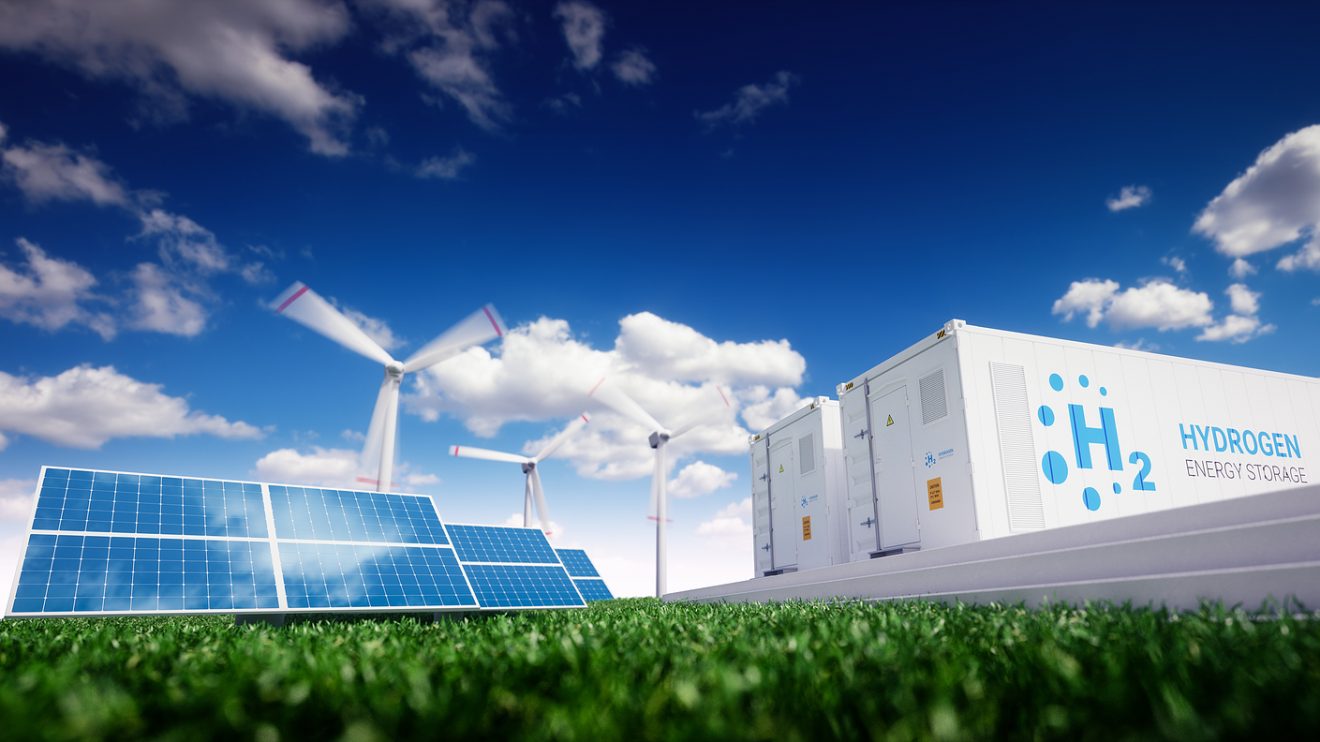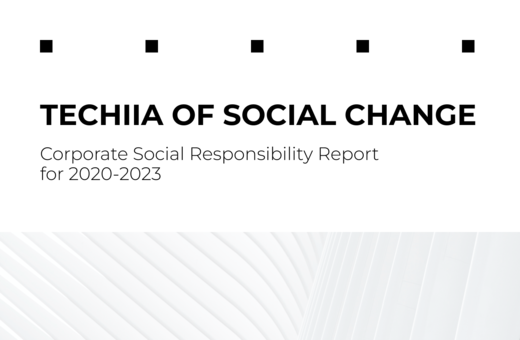
Oleg Krot, an investor, TECHIIA’s Managing Partner, on making money on global warming, investing in hydrogen, and Ukraine's Green Deal.
People are divided into two categories. Some of them believe in global warming, others don’t. Climate dissidents have only two arguments: first, the Earth's climate is constantly changing, and secondly, observations of changes have been carried out for only a few centuries, which makes any conclusions about the existence of global warming irrelevant.
Proponents of the global warming idea rely on temperature change data over the past 140 years. Here's what, for example, the temperature statistics of the US National Oceanic and Atmospheric Administration says. Let’s take a look at the average on Earth in April. The numbers are relentless: since 1880, this figure has increased by 1.1° C.
Now let's answer two significant questions: what does this mean for humanity and what does it mean for investors?
The current temperature rise is the result of the increasing atmospheric carbon dioxide levels due to human activities. Only a little over a degree, but the consequences are enormous: fires, droughts, hurricanes, storms, floods, tsunamis.
The Stockholm Environment Institute estimates that by 2100, the damage from climate change-related disasters will $1.9 trillion a year. And this statistics brings us very close to answering the second question.
A transition towards a climate-neutral economy
We live on the verge of a global ecological disaster. A huge number of different programs to save the planet have already been introduced. One of them is limiting carbon dioxide emissions into the atmosphere.
The and the plan to achieve carbon neutrality by 2050, and China by 2060. These initiatives apply to all producers, be they industrialists or farmers, that is, to all certified national companies.
The concept of the European Green Deal was also picked up by Ukraine. Our Ministry of Energy has also created a for a climate-neutral economy transition until 2050. Within its framework, it is planned to massively use electric transport, create an energy-efficient industry, introduce alternative energy sources, reduce waste, and switch to the use of "green" hydrogen as fuel.
In front of our own eyes, the “green” agenda is turning into a global trend. A consensus has already formed at the level of governments in the most developed countries on measures to prevent further climate change.
Please note that this plan’s first phase is limited to a period of 30-40 years. This means that the global market has formed a new segment, investments in which will bring not only benefits to others but also tangible profits to the ones directly involved in this segment.
Carbon market 101
Green Investing can be divided into two broad groups. The first is investing in green technologies, be it wind power generation, or creating energy-saving apps for homes and businesses. The second group is investments in financial instruments for energy markets of different countries. Let's start with them.
In 1997, the Kyoto Protocol was adopted, it is the most important international document regulating climate change policies. The protocol was ratified by 192 countries, including Ukraine, which joined the treaty in 2004.
The Protocol applies to six groups of the most harmful greenhouse gases: carbon dioxide (CO2), methane (CH4), nitrous oxide (N2O), hydrofluorocarbons (man-made organic compounds that contain fluorine and hydrogen atoms), perfluorocarbons (man-made compounds containing just fluorine and carbon) and sulfur hexafluoride (SF6).
According to the Kyoto Protocol, each member state receives GHG emission quotas. If the quotas are not fully used up, the balances can be sold to other participants in the GHG market, or to private traders.
The most popular option for quotas is carbon credits. Today, they can be purchased on the in Leipzig, and on the service integrated into it, the , and the .
Due to the growing demand, greenhouse trading sites open quite often. By the way, today, in addition to the spot market for emission permits, there is a market for derivative financial instruments - “green” futures and options, which allow making money on contracts even without owing them. These instruments are traded today on the platform.
GHG emission quota trading
This year, the carbon market is undergoing big changes. In February, China launched a nationwide emissions trading scheme (the largest in the world, by the way). So far, at the first stage of its implementation, quotas are valid for 2,200 power plants in the country. These limits amount to 4.3 billion tonnes of CO2, already twice the size of the European emission market. But the Chinese GHG emission quota market will grow even bigger!
From the news affecting the GHG contract value, it is also worth noting the launch of the domestic emissions trading system in the UK and preparations for the renewal of carbon dioxide quotas in the EU. Thanks to this news, the global carbon market has set a new record: the total cost of carbon permits by the end of 2020 was and is to between €50 and €800 billion in five years.
The carbon market is stable, setting capitalization records for the fourth year in a row. This happens for several reasons. Firstly, with each passing year, contracts are getting more expensive, which is logical, given the general desire to bring emission level to zero over time. Secondly, contracts have long been trading objects. The more often these permits change owners, the higher their price.
And here's how the carbon contract value has grown in recent years. Due to the growing investors’ climate ambitions and the gradual entry into force of restrictive measures by regulators in 2018, the price of a ton of carbon dioxide jumped from €7 to €25. Regulatory pressure and investor appetites are growing, and in March 2021 the price of a ton of emissions €40.
Hydrogen options
In the near future, European regulators will further reduce quotas for large industrial enterprises (in the cement, steel, and chemical industries). As an alternative, the last ones are offered to switch to green hydrogen.
Today hydrogen is being produced in three ways. The most environmentally unfriendly, grey hydrogen, is produced using fossil fuels such as natural gas. Blue hydrogen is produced by steam reforming of natural gas pyrolysis. The most environmentally friendly, green hydrogen is made of water through a process known as electrolysis. Modern industry of green hydrogen, nullifying all efforts to switch to the use of environmentally friendly hydrogen energy.
So, by lobbying for the use of green hydrogen, the EU wants to introduce new pricing rules. They are going to level the price of green, gray, and blue hydrogen. As industrial giants switch to sustainable hydrogen, the price of carbon dioxide is to jump to €90 per tonne.
Therefore, only cryptocurrency investing can be more profitable than carbon contracts today. But unlike a regulated and predictable carbon market, the cryptocurrency market remains a high-risk sector.
How else to make money on green investments
If GHG trading is not appealing to you, take a look at the more traditional economic sectors: eco-material production, investments in agriculture carbon emissions solutions, the production of solar, wind, and other alternative forms of energy. Or the one we discussed previously - the hydrogen.
to the European Commission, hydrogen energy will grow rapidly all over the world, and by 2050 24% of all energy will be produced from green hydrogen, and the capitalization of the hydrogen sector will reach €630 billion.
Another promising area for green investing is green construction in emerging markets. By 2030, $24.7 trillion will be in this sector.
Today it is no longer possible to ignore the green agenda without reputational and financial losses, therefore the most progressive companies incorporate climate risks into their growth strategies. The ones not doing this, face losses.
This statement also applies to green construction. Eco-friendly and more energy-efficient buildings are less risky and therefore more valuable and generate higher returns.
Environmental risks need to be kept in mind regardless of which investing area you choose. Therefore, before investing, learn more about the ‘green component’ of the selected project.
Source:


